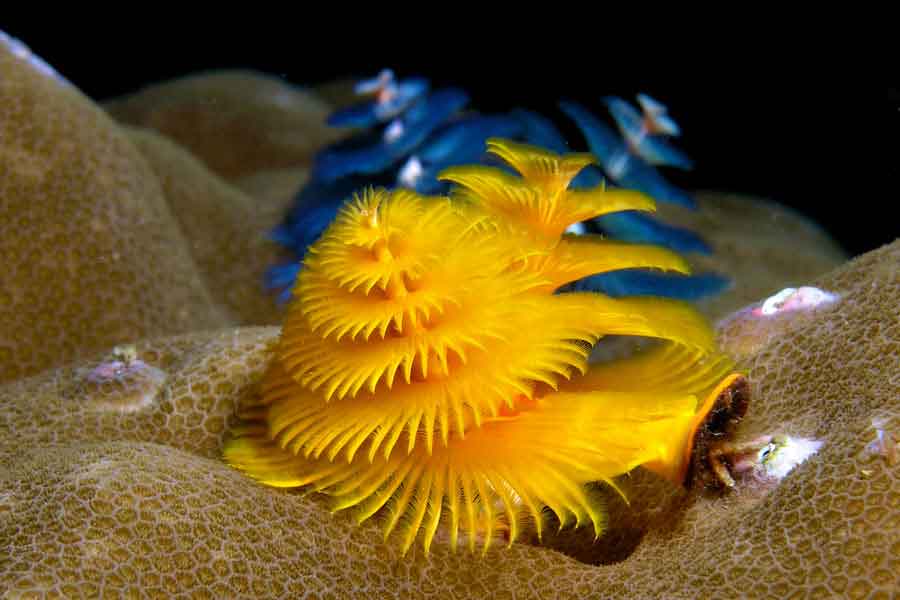
We often associate the word «worm» with unpleasant things and even use it derogatorily. It seems that all worms have the characteristic of being ugly and undesirable.
However, this perception changes when we come across a serpulid worm, also known as the «Christmas tree worm,» while exploring a coral reef. This polychaete worm is just slightly larger than the tiny coral polyp it invades, upon which it constructs a small calcareous tube in which it resides.
The tiny worm is rarely visible, but it extends two radioles, each only three centimeters tall, which contain feathery gills that coil into spirals of vibrant colors. Thus, the worm, elegantly decorated, is ready to face the daily struggle for survival. The feathery gills not only extract oxygen from the water but also serve to capture food consisting of microscopic plants and animals from the plankton. It’s the same menu enjoyed by the neighboring coral polyp.
Only a pair of small arms called «palps» will protrude from the lower part of the worm, while the rest of its body remains immobile inside the calcareous tube. The feathery gills then function as a fishing net. Granted, it’s not a very large fishing net, but it is highly effective. On the other hand, the animal that feeds on the captured food is not only small but also practically immobile, requiring a relatively small amount of energy and, consequently, not much food. It’s a perfect equation.
At the slightest shadow or vibration in the water, the feathery gills retract in a fraction of a second, the entire worm contracts inside the calcareous tube, and the radioles form an intricate plug that predators cannot penetrate. When a diver approaches to observe or photograph them, they protect themselves so quickly that they seem to have vanished, leaving only a tiny, almost invisible hole in their place.
Life in the reef is as diverse as it is complex. The silent multitude of animals that make up the reef sometimes challenges even the most expert eye, passing unnoticed. Other times, we encounter animals so small that they would be nearly imperceptible if it weren’t for the fact that they adorn their bodies with the brightest and most striking colors, as if to say, «Here I am.» As if, relying on their speed, they defy predators. Or perhaps it is simply Neptune’s secret command that, taking pity on worms, granted them eternal beauty.
«One cannot defend what one does not love, and one cannot love what one does not know.»

